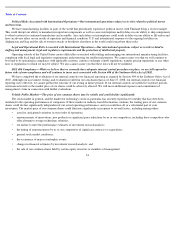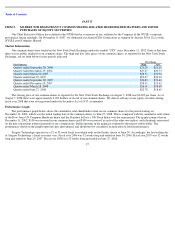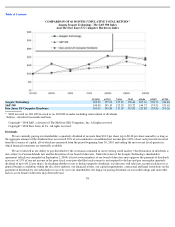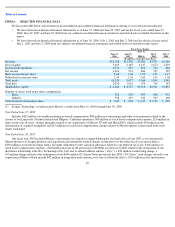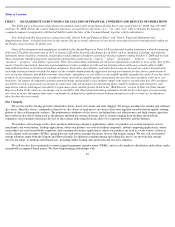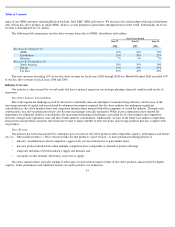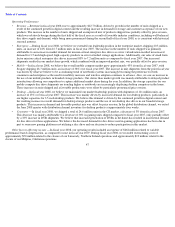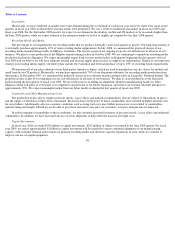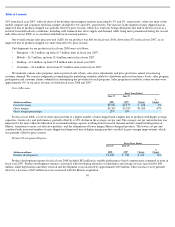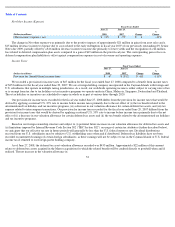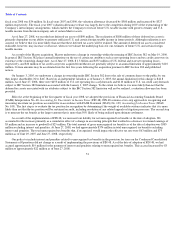Seagate 2007 Annual Report Download - page 44
Download and view the complete annual report
Please find page 44 of the 2007 Seagate annual report below. You can navigate through the pages in the report by either clicking on the pages listed below, or by using the keyword search tool below to find specific information within the annual report.
Table of Contents
many of our OEM customers including Hewlett-Packard, Dell, EMC, IBM and Lenovo. We also have key relationships with major distributors,
who sell our disc drive products to small OEMs, dealers, system integrators and retailers throughout most of the world. Substantially all of our
revenue is denominated in U.S. dollars.
The following table summarizes our disc drive revenue from sales to OEMs, distributors and retailers:
The only customer exceeding 10% of our disc drive revenue for fiscal years 2006 through 2008 was Hewlett-Packard. Dell exceeded 10%
of our disc drive revenue in fiscal years 2008 and 2006.
Industry Overview
Fiscal Years Ended
June 27,
2008
June 29,
2007
June 30,
2006
Revenues by Channel (%)
OEM
67
%
64
%
72
%
Distributors
26
%
30
%
25
%
Retailers
7
%
6
%
3
%
Revenues by Geography (%)
North America
30
%
30
%
30
%
Europe
27
%
27
%
27
%
Far East
43
%
43
%
43
%
Our industry is characterized by several trends that have a material impact on our strategic planning, financial condition and results of
operations.
Disc Drive Industry Consolidation
Due to the significant challenges posed by the need to continually innovate and improve manufacturing efficiency and because of the
increasing amounts of capital and research and development investments required, the disc drive industry has undergone significant
consolidation as disc drive manufacturers and component manufacturers merged with other companies or exited the industry. Through such
combinations, disc drive manufacturers have also become increasingly vertically integrated. While recent combinations have limited the
opportunity for additional industry consolidation, the increasing technological challenges, associated levels of investment and competitive
necessity of large-scale operations, may still drive future industry consolidation. Additionally, we may in the future face indirect competition
from present and potential customers who from time to time evaluate whether to offer electronic data storage products that may compete with
our products.
Price Erosion
Our industry has been characterized by continuous price erosion for disc drive products with comparable capacity, performance and feature
sets (i.e., “like-for-like products”). Price erosion for like-for-like products (“price erosion”) is more pronounced during periods of:
•
industry consolidation in which competitors aggressively use discounted price to gain market share;
•
few new product introductions when multiple competitors have comparable or alternative product offerings;
•
temporary imbalances between industry supply and demand; and
Disc drive manufacturers typically attempt to offset price erosion with an improved mix of disc drive products characterized by higher
capacity, better performance and additional feature sets and/or product cost reductions.
43
•
seasonally weaker demand, which may cause excess supply.



